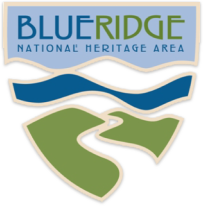
Ray Hicks
Ray Hicks, one of North Carolina most renowned storytellers, lived atop Beech Mountain in Watauga County with his wife Rosa in a manner more common to the pioneer than to the modern mountaineer. It was not unusual for visitors to the Hicks’ striking two-story frame house to find Rosa busy drying apples and “putting up” produce from the garden while Ray entertained friends and neighbors in the front room.
Standing nearly seven feet tall, Ray was a striking figure. But the true marvel was his verbal presence. He spoke a dialect of English that retained much of the vocabulary, phrasing, expression, and accent of earlier English and Scots-Irish immigrants to the region. For this, he was featured on Robert McNeil’s PBS series The Story of English.
Hicks was best known for telling of a group of stories known as the Jack Tales, which are kin to the well-known tales “Jack and the Beanstalk” and “Jack and the Giant Killer.” The tales have ancient antecedents in Celtic and European folklore. Hicks’ interpretations could take an hour or more to complete. In them, he wove fairy tale elements with realistic trappings of Southern Appalachian culture. Folklorist and former director of the Folk Arts Program at the National Endowment of the Arts Bess Lomax Hawes said, “He moves into a story, and is totally engrossed. He talks about the characters as if they’d just stepped ’round back of his house, or gone up the road a piece.”
Less well known were his musical gifts. He was a powerful singer of traditional British and American ballads, and he was a soulful harmonica player.
Honors awarded to Ray Hicks include a 1983 National Heritage Fellowship Award from the National Endowment for the Arts and a 1991 North Carolina Folk Heritage Award. Although his public appearances were limited due to his distaste for traveling, Hicks was the star performer when he participated in the annual National Storytellers Festival in Jonesborough, Tennessee. He was featured in documentaries, and profiled by the New Yorker magazine, and recognized by the National Storytelling Association, the Smithsonian Institution, the Governor of North Carolina, and the President of the United States.
At the forefront of the national revitalization of a venerable art form, he had a love for storytelling that was unmatched. “Storytelling’s an art,” he said. The story can’t be changed if it’s written down. Then it’s writing—not talking.”


